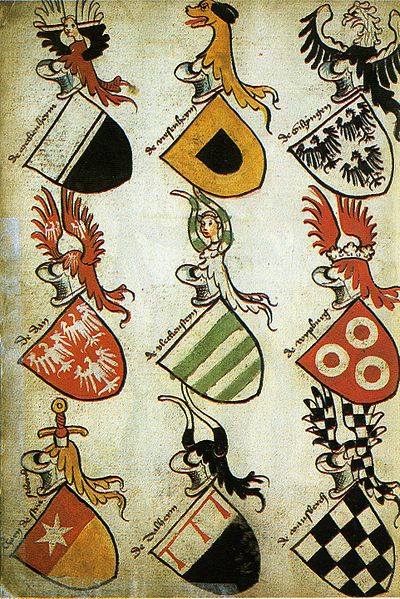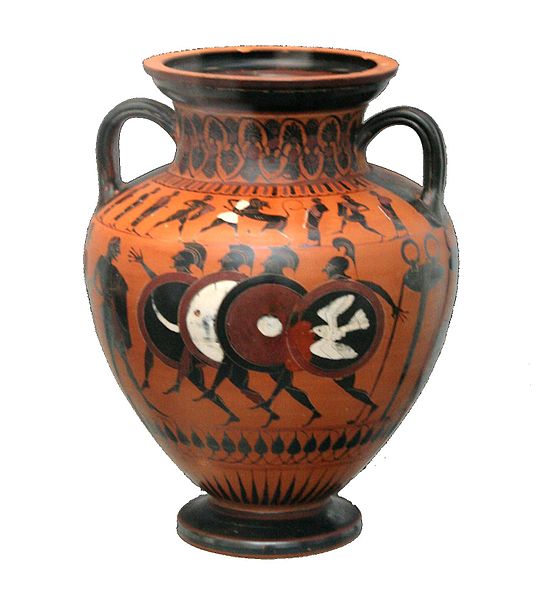Tincture is the limited palette of colours and patterns used in heraldry. The need to define, depict, and correctly blazon the various tinctures is one of the most important aspects of heraldic art and design.
Canons from the chapter of Bruges, solemn winterdress in fur
Hatching guide by Jan Baptist Zangrius, 1600
Heraldry is a discipline relating to the design, display and study of armorial bearings, as well as related disciplines, such as vexillology, together with the study of ceremony, rank and pedigree. Armory, the best-known branch of heraldry, concerns the design and transmission of the heraldic achievement. The achievement, or armorial bearings usually includes a coat of arms on a shield, helmet and crest, together with any accompanying devices, such as supporters, badges, heraldic banners and mottoes.
The German Hyghalmen Roll was made in the late 15th century and illustrates the German practice of repeating themes from the arms in the crest. (See Roll of arms).
Reverse of the Narmer Palette, circa 3100 BC. The top row depicts four men carrying standards. Directly above them is a serekh containing the name of the king, Narmer.
Fresco depicting a shield of a type common in Mycenaean Greece.
Vase with Greek soldiers in armor, circa 550 BC.






